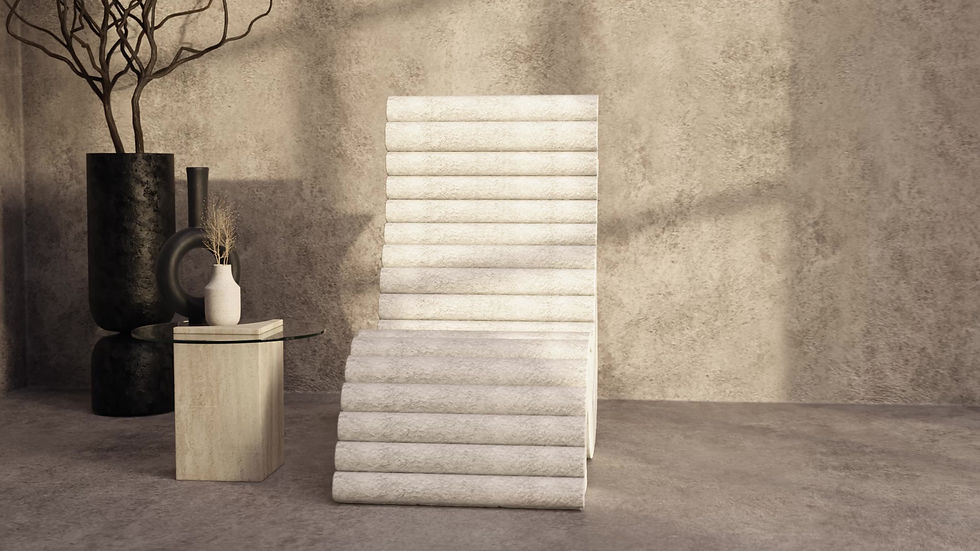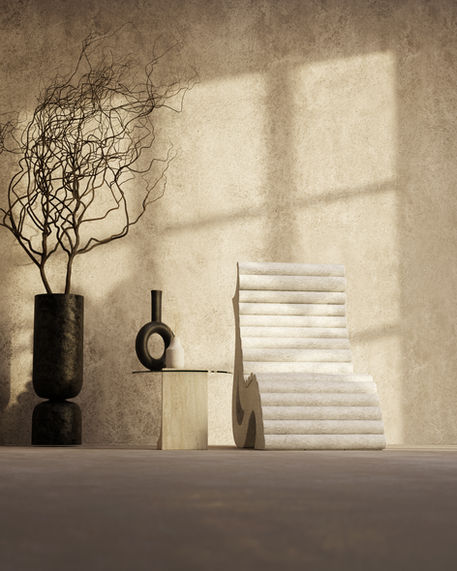
This project explores the potential for prefabricated, user-assembled furniture made from mycelium to be a feasible alternative to the current furniture industry that wreaks environmental havoc. Positioned at the intersection of industrial design, sustainability, user-centered design, and material innovation, this concept proposes a shift away from conventional materials and manufacturing methods toward a new model that is circular and rooted in the natural world.
Deliverables
-
Digital 3D model of a mycelium chair, representative of the reimagined, sustainable furniture brand
-
Step-by-step instructions for assembly
-
Graphic toolbox / visual identity that positions the brand within the mass market furniture landscape
-
Animation
-
Magazine feature
Problem Definition
Once built to last generations, furniture now often lasts no longer than a lease. Changing trends and rapidly shifting consumer tastes have turned it into a disposable commodity, making the industry a major contributor to environmental harm.
Companies like IKEA promote sustainability through recycling programs, but even recycled products eventually end up in landfills once they are too damaged or contaminated; over 12 million tons of furniture were discarded in the U.S. in 2018, with more than 80% of that waste ending up in landfills. This shows the need to rethink how furniture is designed, produced, and managed throughout its entire lifecycle.
Objective
Establish that a new model for sustainable furniture can be developed by combining bio-composites and user-assembled design, while leveraging design to challenge the wastefulness of fast furniture.
Positioning
The business is positioned as the first to offer affordable, build-it-yourself mycelium furniture that aligns with current ergonomic and aesthetic trends. The material is fully compostable, non-toxic, and supports a circular economy. Significant opportunities exist in capitalizing on the growing demand for sustainable, affordable furniture, especially as remote and hybrid work increases interest in ergonomic home solutions.
Design Approach
Visually, the branding is ultra-modern, with high contrast, dramatic lighting in photography, and earthtones for the colour palette to mimic the various beiges that can be present in mycelium. The elegant curves in the display type are also reflected in the curves of the chair.
This concept does not rely on modifying consumer behaviour, or trying to convince everyone to be less greedy and materialistic, as many sustainability movements often do. Instead, the rapid product turnover actually becomes a key opportunity for mycelium furniture, as its temporary nature is well-suited to current consumer behaviors, where furniture is often replaced within a couple years.
Audience
The target market for this mycelium-based furniture brand consists of mass-market home furniture buyers who seek affordable, stylish, and functional furniture. This includes young professionals, renters, students, and homeowners who prioritize cost-effective yet aesthetically appealing pieces suited for their everyday lives. Geographically, the market spans across urban and suburban areas across Canada. The target audience consists of first-time furniture buyers, apartment renters, and budget-conscious homeowners. While sustainability may be an added benefit, their purchasing decisions are primarily driven by cost, aesthetics, and functionality.
Outcome
By tying the compostable nature of mycelium to the quickly evolving consumer trends that exacerbate the rate at which objects are discarded, this work challenges the assumption that permanence is a necessary design value. The mycelium prefabricated, user-assembled furniture concept positions ephemerality not as a limitation, but as an opportunity to reimagine how furniture can serve both people and the planet.



Once the overall form was established, I refined the exact dimensions of each component with ergonomics as a primary objective. Given that my target market is based in Canada, I sought anthropometric data specific to the Canadian population. A recent study that provided precisely the measurements needed to inform and validate my design. Drawing on this anthropometric data and cross-referencing ergonomic recommendations allowed me to refine the chair’s dimensions to better suit real human bodies that are in my target market.


User instructions for assembly facilitate a deeper connection between the consumer and the product and add perceived value, since the consumer had a hand in making the chair.


